You’d never do such a thing, of course–but if you asked me to name the ultimate product of Hollywood’s Studio Age, I’d pick Lynch’s Mulholland Dr (it’s also my favourite film). If pressed to choose a movie that was actually made during the period in question, I’d have to go with one of two very late exercises in Metrocolored auteurism (both released in 1958)–Minnelli’s Some Came Running (more on that one some time soon) or Nick Ray’s Party Girl:
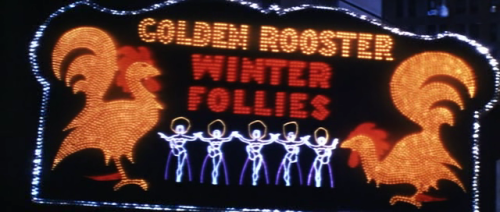
There are other 1930-1960 Hollywood films that I like as much or more (Vertigo, Portrait of Jennie, Love Letters, Little Man, What Now?, Strange Cargo, Moonrise, Trouble in Paradise, The General Died at Dawn, All Quiet on the Western Front, The Front Page, The Strange Love of Martha Ivers, Duck Soup, Kings Row, Ruby Gentry, The Wedding Night, H.M. Pulham Esq., Curse of the Cat People, History is Made at Night, Possessed (1931), The Strange Woman, The Black Cat, Dracula, Freaks, Out of the Past, Murder, My Sweet, Sirk’s Imitation of Life, Easy Living, Scarlet Street, Alice Adams, Swing Time, It’s A Wonderful Life, The Narrow Margin, The Killers, You Only Live Once, You and Me, Meet John Doe, The Miracle Woman, Stage Door, The Bitter Tea of General Yen, Sullivan’s Travels, Christmas in July, Kansas City Confidential, Fallen Angel, High Sierra, The Awful Truth, The Strawberry Blonde, The Roaring Twenties, Juarez, Dark City, Rope of Sand, The Accused, The Devil and Daniel Webster, The Hunchback of Notre Dame, Talk of the Town, Thieves’ Highway, They Drive By Night, All This and Heaven Too, Dark Victory, Three Strangers, Red Dust, Mad Love, The Last Flight, Petrified Forest, Rear Window, The Maltese Falcon, Stella Dallas, Holiday, The Seventh Victim, Citizen Kane, Magnificent Ambersons, Casablanca, Three Comrades, The Shop Around the Corner, The Mortal Storm, Daisy Kenyon, Mann’s Raw Deal, Laura, Road House, Angels Over Broadway, The Lost Moment, We Are Not Alone, On the Town, Yolanda and the Thief, Meet Me in St.Louis, The Clock, Nightmare Alley, A Tree Grows In Brooklyn, Kiss of Death, Kiss Me Deadly, These Three, Wuthering Heights, Vera Cruz, Dodsworth, Shadow of a Doubt, Whale’s Waterloo Bridge, and Ray’s own They Live By Night, Bigger Than Life and In a Lonely Place, to name just a few), but none of them embody the best and worst of Tinseltown’s tendencies the way Party Girl does.
How so?
Well, consider the casting:
The leads? Two of the most hermetically-sealed mugs in the history of screen thesping. Just look at ’em:
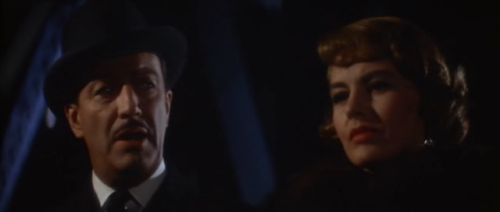
Forget “where’s Waldo?”–where’s the “humanity”? You can scan these pans from here to eternity without discovering a trace of method in their maskness. Does that make them ineffective performers? No way. As we’ll see, this is a “right face at the right time” scenario. But we’ll return to that…
Take a look at some of the key character players.
In one film, Ray gives us the ultimate avuncular psychopath (Lee J. Cobb):

(Messers. De Niro and De Palma clearly paid attention to this one)
The ultimate sleazoid henchman (John Ireland):
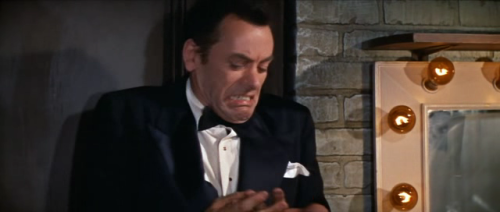
AND the ultimate pseudo-leading man (Kent Smith, in a role–the flawed crusading District Attorney– that, in many other films, would be the lead… that title’s not a knock, by the way: Smith’s ersatzness is absolutely essential to the greatness of films like Cat People and The Fountainhead):

With that group on hand, you know you’re in for gangsterism–and you definitely get a large helping of “Early thirties Chicago” here–but refried, Ray-style (Ray-fried? Ray-ified?)… All of the elements of Party Girl are recognizable to a veteran classic film viewer, but the director puts them together in unprecedentedly odd ways. It’s a gangster film, yes–with much of its generic momentum provided by a Brando-ized (and much less successful) cousin of Scarface‘s Tony Camonte:
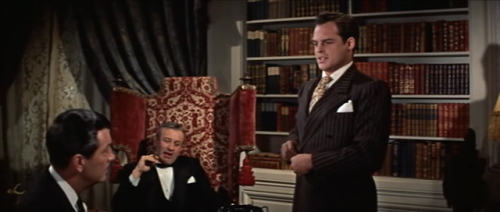
but all Hoppered up with visions of loneliness/intersubjectivity-in-crisis like these:
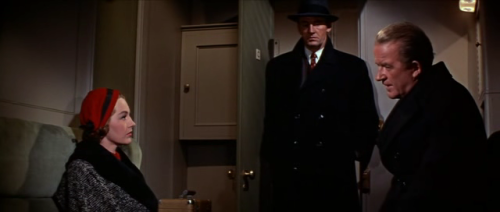
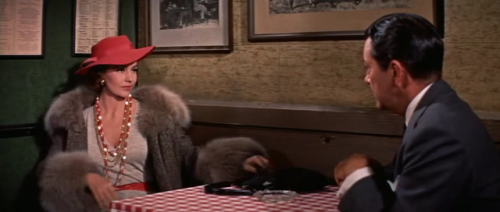
and Sirked way off course by a plot that’s 40% recovery-from-disability narrative:
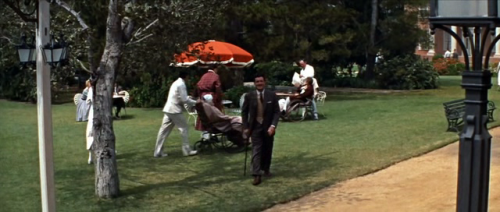
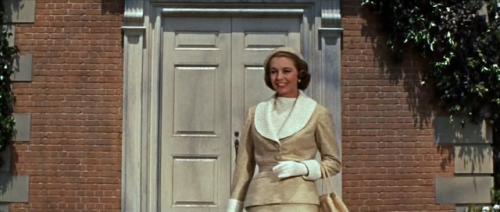
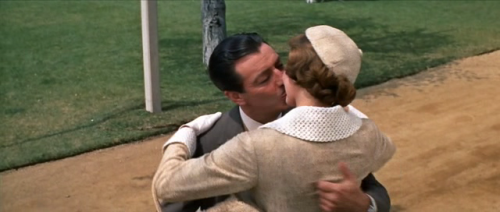
And while your brain is slam-dancing with that dissonance, allow me to throw Cyd Charisse’s leopard-printed gams into the mix:
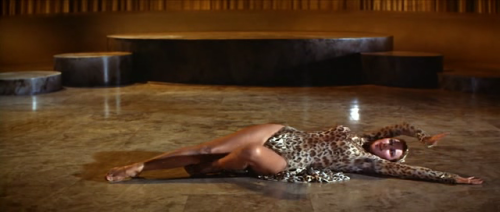
(I’m afraid Cyd activates my “male gaze” problem wherever she appears–and this film both encourages that mode AND calls it into question far more effectively than anything else she did at MGM… with many scenes, especially early on, that dramatize what the ravages of all of that ogling can do to a woman’s spirit… also note that Ray allows Charisse to look like exactly what she was in 1958–an absurdly beautiful woman in her mid-30s, NOT an ingenue)
The film actually kicks off as if it means to be a precursor of Verhoeven’s Showgirls (I suppose the weirdly off-base title must have something to do with this impression), and Charisse really shows us something (other than her celebrated grace) in these scenes. Vicki Gaye’s deadened pan is clearly shown to be a defensive formation against the forces of objectification. In a manner uniquely his own (although I suspect that Verhoeven learned a lot about how to deploy Elizabeth Berkley from this film… I’d love to know if he ever saw it), Ray skillfully transforms the actress’ limited range into a powerful gesture toward subjectivity. When you watch isolated scenes of this film, Charisse doesn’t seem to be giving any kind of a performance, but I defy you to watch it from beginning to end without finding something compelling in her progression.
Likewise, Robert Taylor’s weird passivity is exploited to wonderful effect in this film. Has there ever been a more diffident leading man? Alan Ladd is a bravura trouper, by comparison. The one thing Taylor can do is be stubborn, and Ray lets him flash this talent in EVERY scene. How would Melville’s Bartleby do as a gimpy mafia consigliere? Party Girl gives us the answer.
Clydefro is right to draw our attention to Ray’s absolute belief in the personality-altering effects of romantic attraction (whether transient or lasting). NO ONE is better at showing people getting under each other’s skins. Even–or maybe even especially–these two manikins. The scene in the speakeasy, in which the pair stab through each others’ jaded worldviews with ice pick glances, could very well be the best of its type–leagues ahead of the kind of banter that is supposed to achieve the same ends in things like Hawks’ Big Sleep.
And the violence, when it comes stealing into the narrative (as in Cobb’s savage assault upon Jean Harlow’s photo; in the Capone-esque trophy scene shown above; in the glimpse of Vicki’s rommate’s suicide; in the “greatest hits” montage and in the finale) is absolutely jarring, in a way that it never, ever could be in a gangster film devoid of Charisse dance sequences and extended sojourns to special Swedish health institutes.
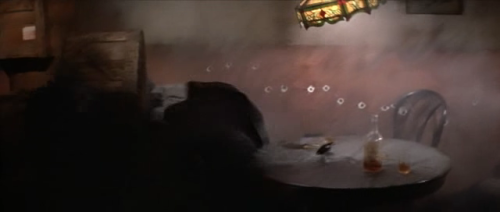
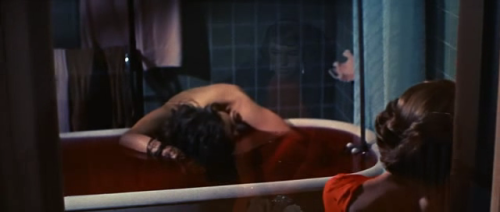
All that and a happy ending too!
Godard claimed that Ray IS cinema. I don’t know about that–but Party Girl IS Hollywood Cinema.
a bientot, les amis
Dave
